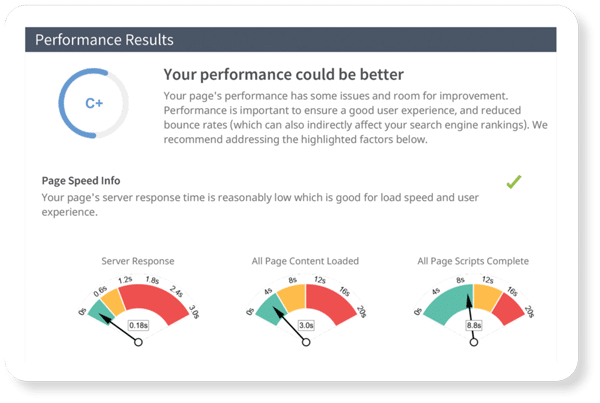When it comes to technology, it often feels that just when you get a handle on how to best use an application or device everything changes, and it’s time to learn the next latest, greatest thing. The pace of change can seem overwhelming, but keeping up with the changes in website development technology is incredibly important. These aren’t just trendy whims, they’re standards, and they change as a response to changing guidelines around incredibly important things that impact your website’s performance, such as search engine optimization, accessibility, security, and usability.
In the same way you, as an orthopedic practitioner, have to keep up with the newest hip replacement options, the latest techniques for minimally invasive arthroscopy, even the latest materials being used in artificial knees — you have to stay current or risk getting left behind. How do you know if your website is falling behind? Here are some questions to ask as you assess your website to see if it’s time to update.
1. Is the design responsive and mobile friendly?
Your orthopedic website might look great on a big, 24-inch high-resolution monitor. How does it look on a 5.5-inch iPhone? Is it designed responsively so that it instantly adjusts, and stays readable, on a mobile device? Or does a visitor on his or her phone spend a few seconds trying to expand the screen and then give up? Mobile-first design is required by search engines, and missing the mark can mean penalties from Google and other search engines. Don’t stop with the superficial aspects of your website’s design, however. Consider the user experience and the organization of your website. Does the information included make sense? Is it easy to navigate?
2. Does it meet the required accessibility standards?
Website accessibility as required by the Americans With Disabilities Act is a fully defined set of standards that every website is required to meet. Not doing so means opening up your business to potential lawsuits as well as penalties from Google and other search engines. It also renders your website unusable to the roughly 1.4 billion people with disabilities in the world. That’s a huge potential audience to cut off from your site!
3. Is it secure?
Website security isn’t something you can set and forget. It requires updating every year. Sites that aren’t secured using an SSL certificate don’t have HTTPS at the beginning of their URLs, and are vulnerable to all kinds of threats. This is doubly true if you take payments through your website, but even if you don’t, having this layer of security for your website is absolutely required. If not, your SEO will suffer, as Google ranks unsecured websites far lower than those with HTTPS URLs. Your users likely won’t be interested in using your website either, as a website without security shows a warning to users when they first enter.
We Can Help
Not sure if it’s time to update your orthopedic practice website? Don’t know where to start? MyAdvice has over 20 years of experience building and updating websites just like yours. Schedule a consultation with one of our experts to get started.


